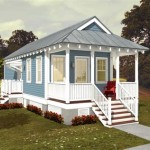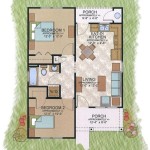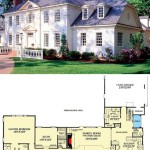A lake house floor plan is a blueprint or layout that outlines the design and organization of a house specifically built near or around a lake. It serves as a guide for constructing and arranging various rooms, spaces, and features within the house to maximize its functionality and aesthetic appeal in the lakeside setting.
Lake house floor plans typically consider factors such as the views of the lake, the orientation of the house to optimize sunlight and natural ventilation, and the incorporation of outdoor living spaces like decks, balconies, or patios that allow occupants to enjoy the lakefront. By carefully designing the floor plan, architects can create lake houses that seamlessly blend indoor and outdoor living, fostering a connection with the serene and beautiful environment.
In the following sections, we will delve into the essential elements of a lake house floor plan, exploring different design options, functional considerations, and tips for creating a space that enhances both comfort and enjoyment in a lakeside setting.
When designing a lake house floor plan, consider these important aspects:
- Maximize lake views
- Optimize natural light
- Incorporate outdoor living spaces
- Create open and airy interiors
- Design for multiple sleeping areas
- Provide ample storage
- Consider accessibility
- Energy efficiency
By keeping these factors in mind, you can create a lake house floor plan that meets your specific needs and enhances your enjoyment of the lakeside lifestyle.
Maximize lake views
Capitalizing on the stunning lake views is a primary consideration when designing a lake house floor plan. To achieve this, architects employ various strategies that optimize the orientation and placement of rooms and windows.
- Large windows and sliding glass doors: Floor-to-ceiling windows and sliding glass doors provide unobstructed views of the lake, creating a seamless connection between the indoors and outdoors. These large openings allow natural light to flood the interior, brightening the space and reducing the need for artificial lighting.
- Open floor plans: Open floor plans eliminate walls and partitions, creating spacious and airy living areas that maximize the views from multiple vantage points. This design approach ensures that as many rooms as possible have access to the lakefront vistas.
- Elevated decks and balconies: Decks and balconies extend the living space outdoors, providing elevated vantage points to enjoy the lake views. These outdoor areas can be incorporated into the floor plan to create seamless transitions between indoor and outdoor living.
- Lake-facing orientation: The orientation of the house on the lot plays a crucial role in maximizing lake views. Architects carefully position the house to ensure that the primary living areas, such as the living room, dining room, and master bedroom, face the lake, offering panoramic views from inside the home.
By implementing these strategies, architects can create lake house floor plans that capture the beauty of the lakeside setting, allowing occupants to fully immerse themselves in the serene and environment.
Optimize natural light
Incorporating natural light into a lake house floor plan is essential for creating a bright, airy, and inviting atmosphere. By carefully positioning windows, doors, and skylights, architects can maximize the use of natural light, reducing the need for artificial lighting and enhancing the overall well-being of the occupants.
- Large windows and sliding glass doors: Floor-to-ceiling windows and sliding glass doors allow an abundance of natural light to enter the home. These large openings create a seamless connection between the indoors and outdoors, bringing the beauty of the lakefront setting into the living space.
- Skylights: Skylights are strategically placed in the ceiling to provide natural light to areas that may not have access to windows, such as interior hallways, bathrooms, and closets. Skylights also help reduce the need for artificial lighting during the day, saving energy and creating a more natural and inviting ambiance.
- Light-colored interiors: Using light-colored paints, flooring, and furnishings helps reflect and distribute natural light throughout the home. Bright colors create a sense of spaciousness and make the rooms appear larger and more inviting.
- Avoid obstructing views: When designing the floor plan, it is important to avoid placing walls, furniture, or other objects that may obstruct the flow of natural light. Architects carefully consider the placement of windows and doors to ensure that natural light can penetrate deep into the home.
By optimizing natural light in the lake house floor plan, architects can create a home that is both energy-efficient and visually appealing. The abundance of natural light not only reduces the need for artificial lighting but also creates a healthier and more enjoyable living environment.
Incorporate outdoor living spaces
Lake houses are renowned for their seamless integration with the surrounding natural environment. To fully embrace this lakeside lifestyle, incorporating outdoor living spaces into the floor plan is essential. Architects achieve this by designing decks, patios, screened-in porches, and other outdoor areas that extend the living space beyond the walls of the house.
- Decks: Decks are elevated outdoor platforms that provide a perfect spot for relaxation, dining, and entertaining. They can be designed in various shapes and sizes to accommodate different needs and preferences. Decks often feature built-in seating, fire pits, and pergolas to enhance comfort and functionality.
- Patios: Patios are ground-level outdoor living spaces that offer a more casual and relaxed setting. They can be paved with stone, concrete, or other materials and can be furnished with comfortable seating, tables, and umbrellas. Patios are ideal for grilling, dining, and simply enjoying the outdoors.
- Screened-in porches: Screened-in porches are enclosed outdoor spaces that provide protection from insects and other elements while still allowing occupants to enjoy the fresh air and views of the lake. They can be furnished with comfortable seating, lighting, and ceiling fans to create a cozy and inviting retreat.
- Fire pits and outdoor kitchens: Fire pits and outdoor kitchens are popular additions to lake house floor plans. Fire pits provide a warm and inviting gathering spot for roasting marshmallows, telling stories, or simply enjoying the ambiance of a fire. Outdoor kitchens allow homeowners to cook and entertain outdoors, taking full advantage of the beautiful lakeside setting.
By incorporating these outdoor living spaces into the floor plan, architects create lake houses that seamlessly blend indoor and outdoor living, allowing occupants to fully immerse themselves in the beauty and tranquility of their surroundings.
Create open and airy interiors
Lake houses are often designed to create a sense of openness and airiness, allowing occupants to feel connected to the outdoors and enjoy the beauty of the lakefront setting. Architects achieve this by employing various design strategies that maximize natural light, minimize visual barriers, and promote a seamless flow between indoor and outdoor spaces.
- Open floor plans: Open floor plans eliminate unnecessary walls and partitions, creating spacious and airy living areas that maximize the flow of natural light and air. Common areas such as the living room, dining room, and kitchen are often combined into one large space, providing a sense of openness and encouraging interaction among occupants.
- Large windows and sliding glass doors: Floor-to-ceiling windows and sliding glass doors not only provide stunning views of the lake but also create a seamless connection between the indoors and outdoors. These large openings allow natural light to flood the interior, brightening the space and reducing the need for artificial lighting.
- High ceilings: High ceilings contribute to a sense of spaciousness and grandeur in a lake house. They create a more open and airy atmosphere, making the rooms feel larger and more inviting. Vaulted ceilings and cathedral ceilings are popular choices for lake houses, as they add volume and drama to the living space.
- Minimalist design: A minimalist design approach emphasizes simplicity and functionality, reducing clutter and unnecessary ornamentation. By using clean lines, neutral colors, and natural materials, architects can create a sense of openness and serenity in the lake house.
By incorporating these design elements into the floor plan, architects can create lake houses that are both visually appealing and functionally efficient. Open and airy interiors not only enhance the overall aesthetic of the home but also provide a comfortable and inviting living environment for occupants to enjoy their lakeside retreat.
Design for multiple sleeping areas
Lake houses often accommodate multiple guests and family members, making it essential to design for adequate sleeping arrangements. Architects carefully plan the floor plan to ensure that there are sufficient bedrooms and bathrooms to comfortably accommodate everyone.
- Guest bedrooms: Guest bedrooms are essential for providing comfortable sleeping quarters for visitors and extended family members. These bedrooms should be designed to be cozy and inviting, with comfortable beds, ample storage space, and access to bathrooms.
- Bunk rooms: Bunk rooms are a great way to accommodate large groups of children or teenagers. They provide a fun and space-saving solution, allowing multiple people to sleep in a single room. Bunk rooms should be well-ventilated and have adequate lighting.
- Loft spaces: Loft spaces can be converted into additional sleeping areas, providing a secluded and cozy retreat. They are often accessed by a ladder or staircase and can be furnished with beds, seating, and storage. Loft spaces are particularly popular in lake houses with vaulted ceilings or open floor plans.
- Convertible spaces: Convertible spaces, such as dens or living rooms, can be designed to double as sleeping areas when needed. These spaces can be furnished with sofa beds or Murphy beds that can be easily converted into comfortable sleeping arrangements for guests.
By incorporating multiple sleeping areas into the floor plan, architects ensure that lake houses can comfortably accommodate families and friends, providing a restful and enjoyable retreat for all.
Provide ample storage
Lake houses often accumulate a variety of items, including seasonal gear, water sports equipment, and outdoor furniture. To ensure that these items are organized and out of sight, it is essential to incorporate ample storage solutions into the floor plan.
- Closets and built-ins: Closets and built-in storage units provide a convenient and space-saving way to store items. Closets can be designed in various sizes and configurations to accommodate different storage needs. Built-in storage units, such as bookshelves, cabinets, and drawers, can be customized to fit specific spaces and maximize storage capacity.
- Mudrooms and entryways: Mudrooms and entryways serve as a designated space for storing outdoor gear, shoes, and clothing. These areas can be equipped with hooks, shelves, and benches to keep items organized and prevent clutter from entering the main living areas.
- Attic and basement storage: Attics and basements offer additional storage space for seasonal items and bulky equipment. These areas can be accessed by stairs or a pull-down ladder and can be organized with shelves, bins, and hanging racks.
- Outdoor storage: Outdoor storage sheds or garages provide a secure and convenient place to store lawn equipment, kayaks, paddleboards, and other outdoor gear. These structures can be designed to blend seamlessly with the overall design of the lake house and can be equipped with shelves, hooks, and lighting.
By providing ample storage solutions throughout the lake house, architects ensure that occupants have a place for everything, keeping the living spaces organized, clutter-free, and visually appealing.
Consider accessibility
When designing a lake house floor plan, accessibility is an important consideration for ensuring that the home is comfortable and safe for all occupants, including those with disabilities or limited mobility. Architects incorporate various design elements to enhance accessibility throughout the home.
One key aspect of accessibility is providing step-free access to all areas of the house. This can be achieved through the use of ramps, elevators, or stairlifts. Doorways should be wide enough to accommodate wheelchairs, and hallways and corridors should be free of obstacles to allow for easy movement. Additionally, grab bars and handrails can be installed in bathrooms, showers, and other areas where additional support may be needed.
Another important consideration is the placement of appliances and fixtures. Kitchens should be designed with accessible countertops, sinks, and cooktops. Bathrooms should have accessible showers, toilets, and vanities. Smart home technology can also be incorporated to enhance accessibility, such as voice-activated lighting and automated door openers.
Outdoor spaces should also be accessible, with ramps or gradual slopes leading to decks, patios, and other outdoor areas. Docks and boat lifts can be designed to accommodate wheelchairs and other mobility devices. By incorporating these accessibility features into the floor plan, architects create lake houses that are welcoming and comfortable for all occupants, regardless of their abilities.
In addition to these specific design elements, architects also consider the overall layout of the home to ensure that it is accessible. This includes minimizing the number of steps and level changes throughout the house, and providing clear and well-lit pathways between rooms and spaces.
Energy efficiency
Incorporating energy-efficient features into a lake house floor plan is crucial for reducing the environmental impact and lowering energy costs. Architects employ various strategies to enhance the energy performance of lake houses, ensuring a comfortable and sustainable living environment.
One key aspect of energy efficiency is maximizing natural light. By incorporating large windows and sliding glass doors, architects can reduce the need for artificial lighting during the day. Skylights can also be strategically placed to provide natural light to interior spaces. Additionally, using light-colored paints and flooring materials helps reflect and distribute natural light, further reducing the need for artificial lighting.
Insulation is another important consideration for energy efficiency. Lake houses should be well-insulated to minimize heat loss during the winter and heat gain during the summer. This can be achieved through the use of insulation materials in walls, ceilings, and floors. Additionally, windows and doors should be energy-efficient, with double or triple glazing and tight seals to prevent air leakage.
Efficient HVAC systems are essential for regulating the temperature in a lake house. Architects carefully consider the size and type of HVAC system to ensure that it is appropriate for the size and layout of the home. Energy-efficient appliances and lighting fixtures also contribute to reducing energy consumption. By incorporating these energy-efficient features into the floor plan, architects create lake houses that are not only comfortable and stylish but also environmentally friendly and cost-effective to operate.
In addition to these specific measures, architects also consider the overall design of the home to enhance energy efficiency. This includes optimizing the orientation of the house to take advantage of passive solar heating and cooling, and designing the floor plan to minimize heat loss and gain. By incorporating these energy-efficient principles into the floor plan, architects create lake houses that are both comfortable and sustainable.



.jpg)






Related Posts








